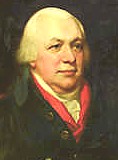How It All Started
This article is a bit of a departure from recent posts, since it doesn’t, in the main, deal with music. But any who have attended or worked in the Sunday School will know that music plays a significant part in the teaching and training that takes place there. As has been noted in other posts, a common name for gospel songs in the nineteenth century was “Sunday School songs,” since they were seen as a teaching tool in that program. So how did this important ministry of the church come to be?
The England of the eighteenth and nineteenth centuries was far different from today. One of the tragic differences was the extensive use of child labour–which was virtual slavery. During the Industrial Revolution, children as young as four were employed in factories under dangerous, and often fatal, working conditions. Many worked sixteen hours a day, six days a week. The Victorian era became notorious for employing young children in factories and mines, and as chimney sweeps. In England and Scotland, two-thirds of the workers in the cotton mills were children.
As a child, author Charles Dickens himself was a victim of this cruel practice. He wrote strongly against it, in novels such as Oliver Twist and David Copperfield. But another man who was to make a dramatic difference was an Anglican layman and newspaper publisher named Robert Raikes (1735-1811). He lived in the English city of Gloucester [pronounced glah-ster].
One afternoon, Mr. Raikes went into the slum area of the city to see if he could find a man willing to work in their family garden. There he was jostled and knocked about by a gang of ragged boys. When he mentioned it to someone, she replied, “You ought to see them on Sundays, when the factories are closed and they have nothing to do but get in trouble!”

Robert Raikes’s heart went out to the ragged children of the slums, worn down by mistreatment, running wild in the streets, and exposed to all kinds of vice. Most of them were illiterate. Many had likely never even seen a book! There were no state schools of any kind back then, and Mr. Raikes believed that a good education would give children a much better start in life. With that conviction, he decided to start a school.
A local pastor made a list of ninety possible children in his own parish, and together the two men visited each home on the list. Not everyone thought it was a good idea. Some parents cursed them, and drove them away. But eventually they were able to enlist a few children in the pioneering project.
Since the children worked in the factories six days a week, Raikes decided to hold his school on Sundays. The Bible was used as the textbook, and church attendance was part of the Sunday curriculum. The “Sunday School” began in the kitchen of a home, in Gloucester, in July of 1780. At first it was for boys only, but soon girls came too.
A high standard was set from the beginning. You had to have a clean face and combed hair to be allowed in. And if parents worried that their children did not have good enough clothes to attend, Mr. Raikes provided them, free of charge.
Many of the first pupils were half-wild creatures, full of hatred and crippled by ignorance. Strong discipline was needed to control the children. But it was administered in an interesting way. When a child was disruptive and disobedient, Mr. Raikes would take the offender home, and have parents apply chastisement to “the seat of learning.” Then, he would bring the student back to school again!
Robert Raikes certainly had his early detractors. Some said “Raikes’ Ragged School,” as they called it, was a violation of the Lord’s Day, when Christians shouldn’t be working. But Methodist founder John Wesley supported the work enthusiastically. He determined that wherever a new Methodist work was started, they would have a Sunday School.
Mr. Raikes used his newspaper to promote his work with children, and word spread that something very worthwhile was being done. In spite of its critics, the movement continued to grow, and schools sprang up all over. In only four years, there were 250,000 pupils enrolled. By 1831, there were 1,250,000 attending Sunday School (about a quarter of the population of Great Britain at that time).
One of the early teachers was a Baptist layman named John Burton. He wrote and published songs for the Sunday School, and the music greatly helped in the teaching and training of those who attended. Committing songs to memory enabled illiterate children to get their first grasp on eternal truth. One of Mr. Burton’s hymns begins:
Holy Bible, Book divine,
Precious treasure, thou art mine;
Mine to tell me whence I came;
Mine to teach me what I am.
That’s how it all started. Praise the Lord for men such as Robert Raikes and John Burton! From its humble beginnings, their spiritual vision continues to bring an understanding of God’s Word to millions all over the world. It has also been the means of bringing many to faith in the Saviour, and preparing them to build godly homes, and serve the Lord in other ways.
